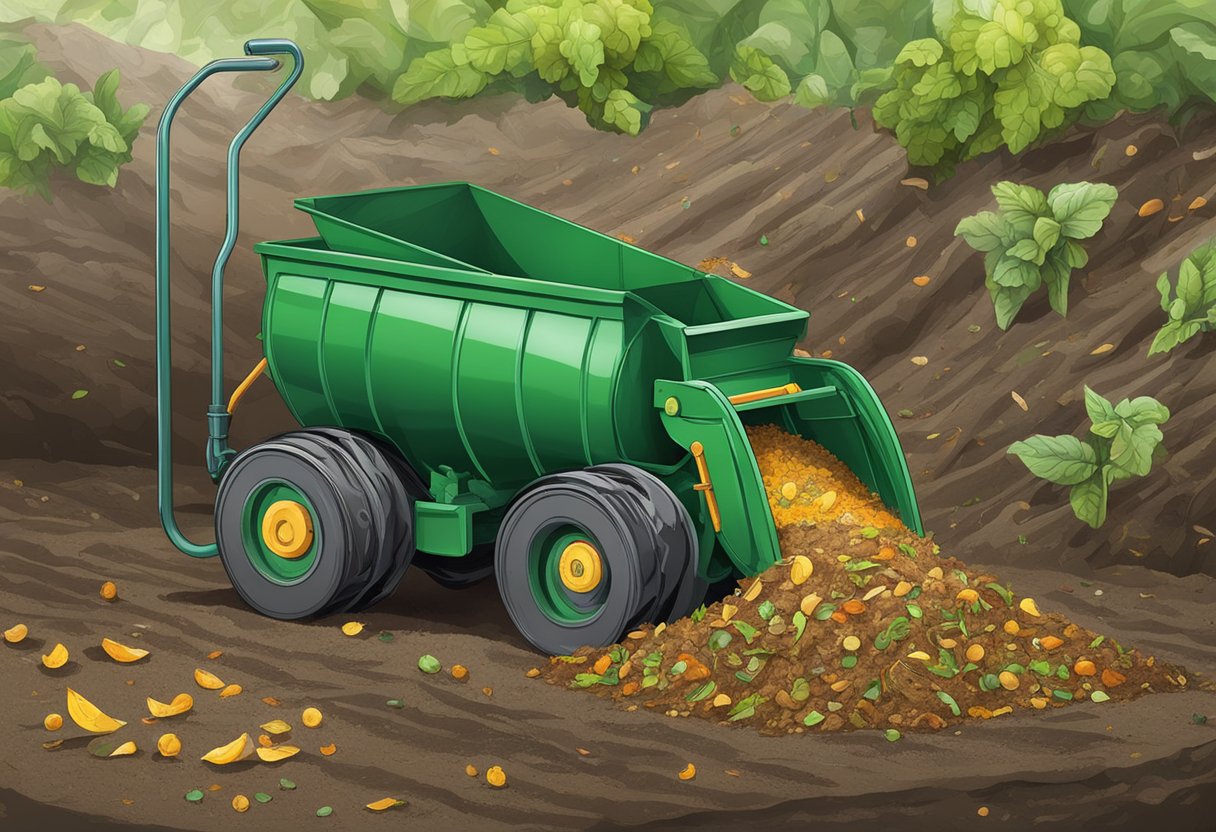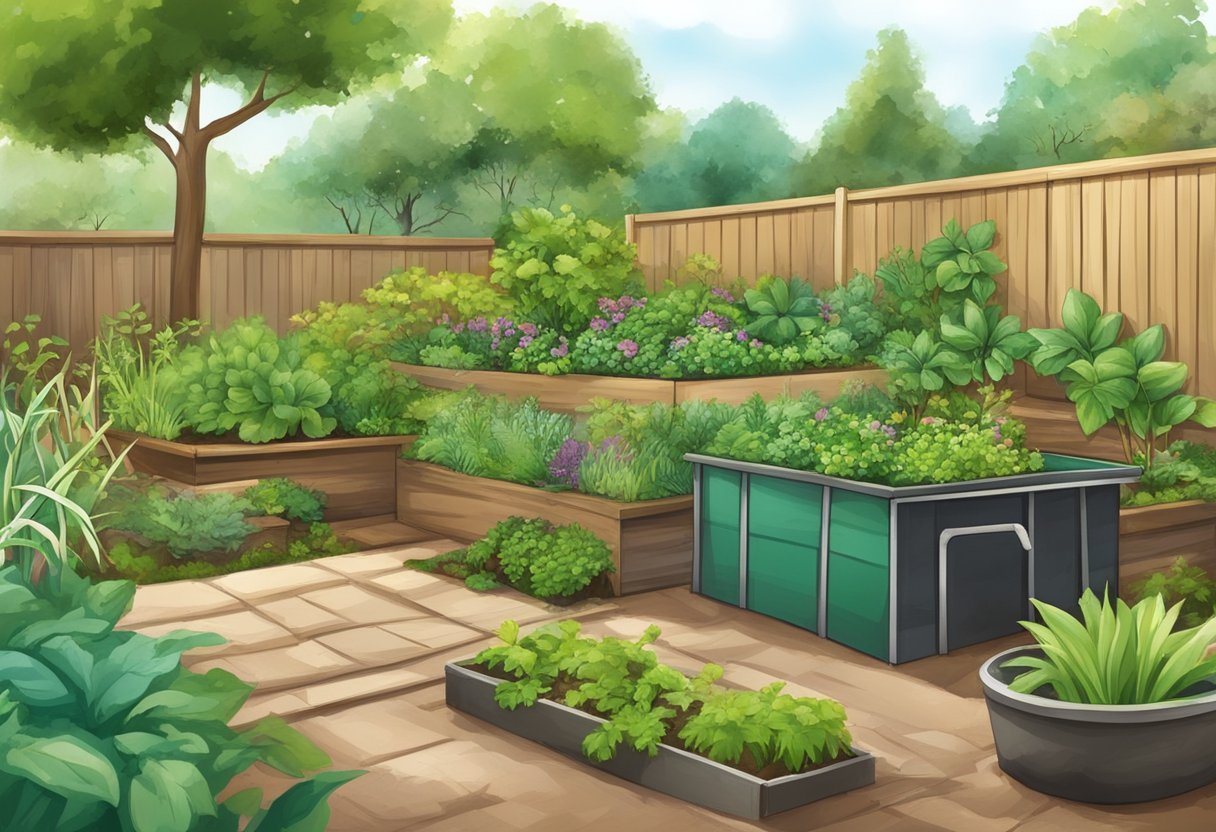As an Amazon Associate I earn from qualifying purchases.
At A Glance
Composting offers a multitude of benefits both for the environment and for gardeners. It transforms organic waste materials into a nutrient-rich soil amendment, enhancing soil structure, water retention, and soil aeration while providing essential nutrients for plant growth. By diverting kitchen scraps and yard waste from landfills, composting significantly reduces methane emissions, a potent greenhouse gas. It also promotes a circular economy by recycling nutrients back into the soil, reducing the need for chemical fertilizers. Moreover, composting supports beneficial soil organisms, which contribute to a healthy, thriving soil ecosystem.
Composting is a simple yet effective way to reduce waste and create nutrient-rich soil for your garden. By breaking down organic materials such as food waste, yard trimmings, and leaves, composting creates a natural fertilizer that can help your plants grow healthy and strong. In addition to being environmentally friendly, composting has a range of benefits for both your garden and your community.
One of the primary benefits of composting is that it helps to reduce the amount of waste that ends up in landfills. By diverting organic materials from the waste stream, composting reduces the amount of methane gas that is produced by landfills, which is a major contributor to climate change. Composting also helps to conserve water by improving soil structure and increasing its ability to retain moisture. This can be especially beneficial in areas that experience drought or have limited access to water resources.
Another benefit of composting is that it can help to improve the health of your garden. Compost is a natural fertilizer that is rich in nutrients such as nitrogen, phosphorus, and potassium, which are essential for plant growth. By adding compost to your garden soil, you can improve its structure, increase its water-holding capacity, and provide your plants with the nutrients they need to thrive. Composting can also help to reduce the need for synthetic fertilizers and pesticides, which can be harmful to the environment and your health.
Understanding Composting
Composting is the process of breaking down organic materials such as food scraps, leaves, and grass clippings into a nutrient-rich soil amendment that can be used to improve the health of plants and soil. Composting is a natural process that occurs when microorganisms such as bacteria and fungi break down organic material.
To start composting, you will need a compost bin or pile. The bin or pile should be located in a spot that is convenient for adding materials and turning the compost. The ideal size for a compost pile is at least 3 feet by 3 feet by 3 feet. This size allows for proper airflow and heat retention, which are essential for the composting process.
The composting process requires a balance of “green” organic materials and “brown” organic materials. “Green” organic material includes grass clippings, food scraps, and manure, which contain large amounts of nitrogen. “Brown” organic materials include dry leaves, wood chips, and branches, which contain high amounts of carbon. A proper balance of these materials is necessary for the composting process to occur.
The compost pile should be turned regularly to ensure that the materials are evenly mixed and exposed to oxygen. Oxygen is essential for the composting process, as it allows the microorganisms to break down the organic material. The temperature of the compost pile should be monitored, as the composting process generates heat. The ideal temperature range for composting is between 120 and 160 degrees Fahrenheit.
In conclusion, composting is a natural process that can provide numerous benefits for your garden and the environment. By understanding the basics of composting and following a few simple steps, you can create nutrient-rich soil amendment that will improve the health of your plants and soil.
Materials for Composting
Composting is a great way to reduce the amount of waste you produce and create nutrient-rich soil for your garden. When it comes to composting, it’s important to know what materials you can and cannot compost. Here are some of the materials you can use for composting.
Greens and Browns
When composting, it’s important to have a balance of “greens” and “browns.” Greens are materials that are high in nitrogen, such as grass clippings, vegetable scraps, fruit and vegetable scraps, and coffee grounds. Browns are materials that are high in carbon, such as leaves, straw, twigs, and cardboard.
To create a balanced compost pile, aim for a ratio of roughly 2 parts browns to 1 part greens.
What Not to Compost
While many materials can be composted, there are some things that should never be added to a compost pile. These include meat, dairy, fish, bones, fats, and glossy paper. These materials can attract pests and create unpleasant odors.
In addition, it’s important to avoid composting any materials that have been treated with pesticides or other chemicals. These chemicals can harm the microorganisms that break down the compost and can ultimately end up in the soil.
By following these guidelines, you can create a healthy compost pile that will provide nutrients for your garden and help reduce waste.
Benefits to the Environment

Composting has numerous benefits to the environment. In this section, I will discuss two of the most significant benefits: reducing landfill waste and lowering greenhouse gas emissions.
Reducing Landfill Waste
Composting significantly reduces the amount of waste that ends up in landfills. According to the Environmental Protection Agency (EPA), organic materials such as food scraps and yard waste make up 30% of the waste stream. By composting these materials, we can divert them from landfills, where they would otherwise take up space and contribute to the production of methane, a potent greenhouse gas.
In addition to reducing landfill waste, composting also has the potential to reduce the need for new landfills. By diverting organic materials from landfills, we can extend the lifespan of existing landfills and reduce the need for new ones, which can be expensive and difficult to site.
Lowering Greenhouse Gas Emissions
Composting can also help to lower greenhouse gas emissions. When organic materials are sent to landfills, they decompose anaerobically, which means without oxygen. This process produces methane, a greenhouse gas that is 28 times more potent than carbon dioxide over a 100-year time frame. By composting organic materials instead of sending them to landfills, we can significantly reduce methane emissions.
In addition to reducing methane emissions, composting can also help to sequester carbon. When organic materials are composted, they break down into a stable form of carbon that can be used to improve soil health. This carbon is stored in the soil, where it can remain for years, helping to mitigate climate change.
Overall, composting is a simple and effective way to reduce landfill waste and lower greenhouse gas emissions. By composting our organic materials, we can help to protect the environment and mitigate the effects of climate change.
Advantages for Soil and Plants

Composting is a natural process by which organic waste is broken down into nutrient-rich soil. This process can have numerous benefits for both soil and plants. In this section, I will discuss some of the advantages of composting for soil and plant health.
Improving Soil Health
Composting can improve soil health in several ways. First, it can increase the soil’s ability to retain moisture, which is especially important in areas with limited rainfall. This can reduce the need for irrigation and help plants survive during dry periods. Second, composting can increase the soil’s oxygen content, which is essential for healthy root growth. Finally, composting can help to prevent soil erosion by stabilizing the soil structure and reducing runoff.
Boosting Plant Growth
Composting can also boost plant growth in several ways. First, it can provide plants with a source of nutrients, including nitrogen, phosphorus, and potassium. These nutrients are essential for plant growth and can help to increase crop yields. Second, composting can help to improve soil quality by increasing the organic matter content of the soil. This can improve soil structure, water retention, and nutrient availability. Finally, composting can provide plants with a layer of mulch, which can help to suppress weeds and retain moisture.
In conclusion, composting can have numerous benefits for soil and plant health. It can improve soil health by increasing moisture retention, oxygen content, and stability, and it can boost plant growth by providing nutrients, improving soil quality, and suppressing weeds.
Composting Methods
Composting is a process of breaking down organic waste into nutrient-rich soil. There are several methods of composting, including home composting, vermicomposting, and municipal composting.
Home Composting
Home composting is a popular and easy way to turn kitchen and yard waste into nutrient-rich soil. It is an environmentally friendly way to reduce waste and improve soil quality. Home composting requires a compost bin or pile, compostable materials, and a garden fork for turning the compost.
Compostable materials include fruit and vegetable scraps, tea bags, coffee grounds, leaves, and grass clippings. It is important to avoid composting glossy paper, meat, dairy, and oily foods, as they can attract pests and contaminate the compost.
To start home composting, layer brown and green materials in the compost bin or pile, add water, and turn the compost every few weeks. The compost should be ready in a few months and can be used to improve soil quality in the garden.
Vermicomposting
Vermicomposting is a method of composting that uses earthworms to break down organic waste. Earthworms consume the organic waste and produce castings, which are nutrient-rich soil. Vermicomposting is a great way to compost food scraps and other organic waste in small spaces.
To start vermicomposting, a worm bin is needed, along with bedding materials, such as shredded newspaper or cardboard, and food scraps. The worms should be added to the bedding material, and food scraps should be added regularly. It is important to avoid adding meat, dairy, oily foods, and citrus to the worm bin, as they can harm the worms.
Vermicomposting is a great way to produce nutrient-rich soil for houseplants and small gardens.
Municipal Composting
Municipal composting is a large-scale composting process that is managed by cities or municipalities. It is a great way to reduce waste and produce nutrient-rich soil on a large scale. Municipal composting facilities accept yard waste, food scraps, and other compostable materials.
The composting process is similar to home composting, but on a larger scale. The compost is turned regularly and monitored for temperature and moisture content. The finished compost is then used in city parks and gardens.
In conclusion, composting is an easy and environmentally friendly way to reduce waste and improve soil quality. Home composting, vermicomposting, and municipal composting are all effective methods of composting that can produce nutrient-rich soil for gardens and parks.
